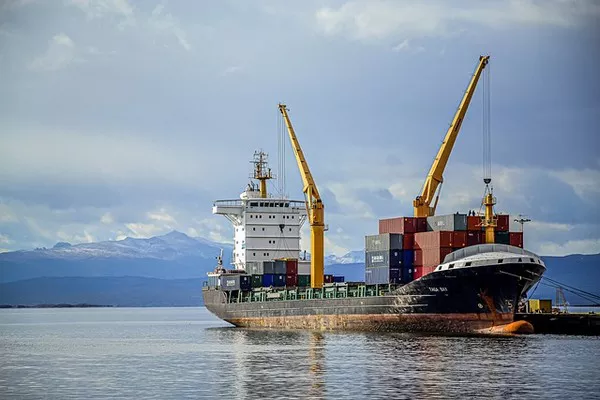Sewage treatment plants (STPs) play a critical role in maintaining the environmental sustainability and operational efficiency of ships. As vessels traverse the world’s oceans, they generate significant quantities of sewage that must be properly managed to prevent pollution and comply with international regulations. In this article, we will delve into the purpose and importance of sewage treatment plants on ships, exploring their functions, regulatory requirements, and environmental impact.
Purpose of Sewage Treatment Plants on Ships:
Environmental Protection: The primary purpose of sewage treatment plants on ships is to mitigate the environmental impact of wastewater discharge into marine ecosystems. Sewage from ships contains various pollutants, including pathogens, nutrients, organic matter, and chemicals, which can degrade water quality, harm aquatic life, and pose risks to human health. By treating sewage before discharge, STPs remove or reduce these contaminants, minimizing adverse effects on the marine environment.
Compliance with Regulations: International maritime regulations, such as the International Maritime Organization’s (IMO) MARPOL Annex IV, mandate the installation and operation of sewage treatment plants on certain types of vessels. These regulations set strict standards for the discharge of sewage from ships, including limits on pollutant concentrations and designated areas where discharge is prohibited or restricted. Sewage treatment plants enable ships to comply with these regulations, avoiding penalties and safeguarding the marine environment.
Public Health and Safety: Proper treatment of sewage on ships is essential to protect the health and safety of passengers, crew members, and personnel working in port facilities. Untreated sewage can contain harmful pathogens, such as bacteria, viruses, and parasites, which may cause waterborne diseases and infections if released into the environment or exposed to individuals onboard. Sewage treatment plants eliminate or reduce pathogens through disinfection and other treatment processes, minimizing health risks and ensuring a safe onboard environment.
Resource Conservation: Sewage treatment plants facilitate the recovery and reuse of valuable resources, such as water and nutrients, from wastewater streams. Onboard recycling systems integrated with STPs allow ships to treat wastewater to a quality suitable for non-potable uses, such as toilet flushing, deck washing, and firefighting. By conserving freshwater supplies and reducing the demand for shore-based resources, STPs contribute to the efficient operation of vessels and enhance their sustainability.
Functions of Sewage Treatment Plants on Ships:
Primary Treatment: The first stage of sewage treatment on ships involves the removal of large solids and debris through screening and sedimentation processes. Primary treatment units, such as screens and settling tanks, capture and separate solid particles from the wastewater stream, preventing clogging of downstream equipment and facilitating subsequent treatment steps.
Biological Treatment: Many sewage treatment plants on ships employ biological processes, such as activated sludge or biological reactors, to biodegrade organic pollutants present in wastewater. Microorganisms naturally occurring in sewage metabolize organic matter, converting it into harmless byproducts, such as carbon dioxide and water. Biological treatment enhances the removal of organic contaminants and improves the overall quality of treated effluent before discharge.
Disinfection: To ensure the elimination of pathogens and microbial contaminants, sewage treatment plants utilize disinfection techniques, such as chlorination, ultraviolet (UV) irradiation, or ozonation. These methods destroy or inactivate harmful microorganisms, including bacteria, viruses, and protozoa, making the treated sewage safe for release into the marine environment or for reuse onboard. Disinfection is a crucial step in preventing the spread of waterborne diseases and protecting public health.
Sludge Management: Sewage treatment plants produce sludge as a byproduct of the treatment process, consisting of residual solids and biomass removed from wastewater. Proper management of sludge is essential to minimize environmental impacts and ensure regulatory compliance. On ships, sludge dewatering systems may be employed to reduce the volume of sludge and facilitate its disposal or incineration in accordance with applicable regulations.
Regulatory Framework for Sewage Treatment on Ships:
The international maritime community has established a comprehensive regulatory framework governing the design, installation, and operation of sewage treatment plants on ships. Key regulations and guidelines include:
MARPOL Annex IV: Adopted by the IMO, MARPOL Annex IV sets forth requirements for the prevention of pollution by sewage from ships. It prohibits the discharge of untreated sewage in designated special areas and regulates the performance standards for sewage treatment plants and the discharge of treated sewage outside special areas.
IMO Guidelines: The IMO has developed guidelines and technical standards to assist shipowners, operators, and flag states in implementing effective sewage management practices. These guidelines address various aspects of sewage treatment, including design criteria, operational requirements, monitoring procedures, and documentation.
Flag State Requirements: Individual flag states may impose additional requirements and regulations governing sewage treatment on ships registered under their jurisdiction. Flag states are responsible for ensuring that vessels comply with international standards and maintaining oversight of sewage management practices through inspections and audits.
Port State Control: Port state authorities have the authority to inspect visiting ships to verify compliance with international regulations and standards, including those related to sewage treatment. Non-compliance with sewage discharge requirements may result in penalties, detention of the vessel, or other enforcement measures.
See Also What Causes Sewage Smell In The Bathroom
Conclusion:
Sewage treatment plants play a vital role in promoting environmental stewardship, protecting public health, and ensuring regulatory compliance in the maritime industry. By treating wastewater onboard ships before discharge, STPs mitigate pollution risks, conserve resources, and contribute to sustainable shipping practices. As the global community continues to prioritize environmental sustainability and maritime safety, the importance of sewage treatment on ships will remain paramount, driving advancements in technology, regulations, and best practices.

